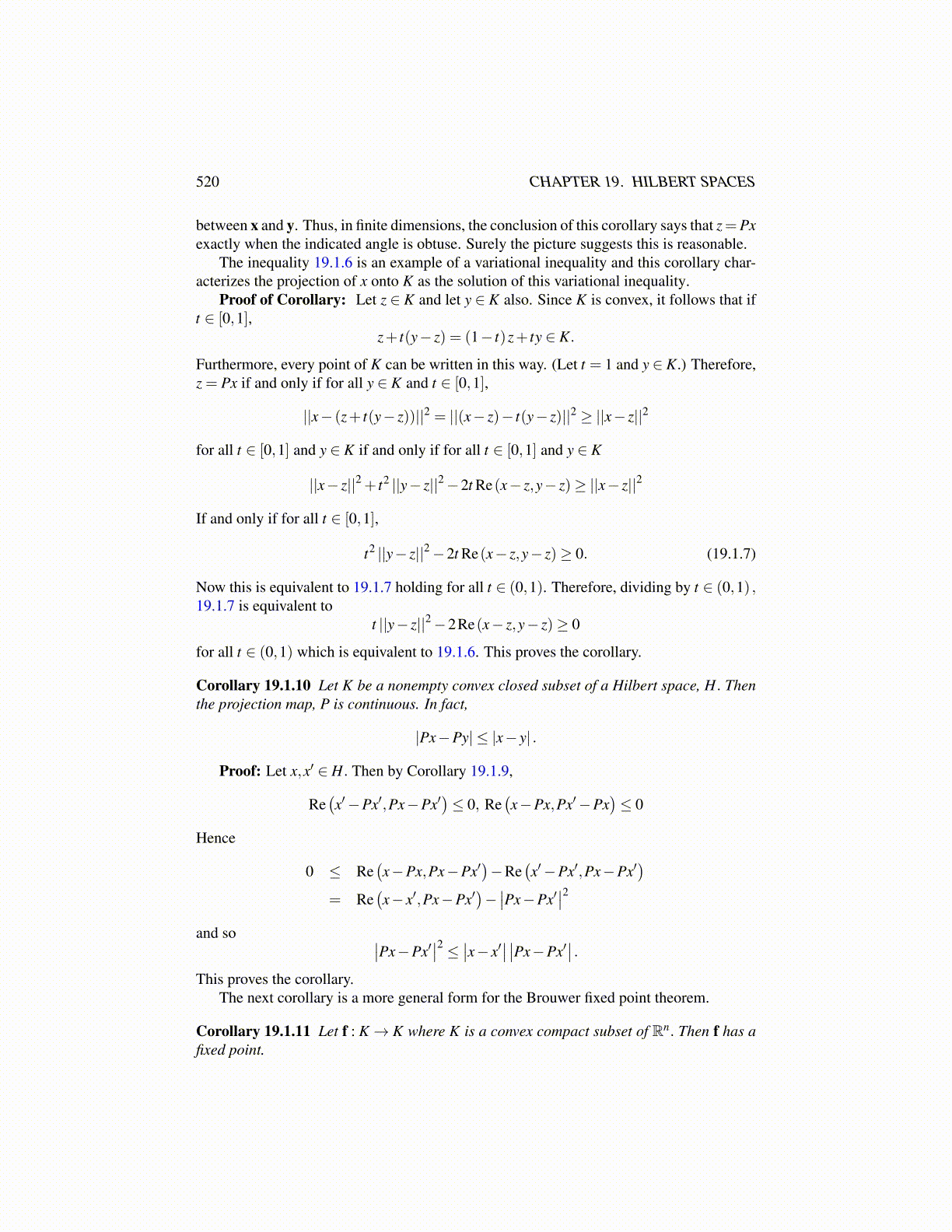
520 CHAPTER 19. HILBERT SPACES
between x and y. Thus, in finite dimensions, the conclusion of this corollary says that z=Pxexactly when the indicated angle is obtuse. Surely the picture suggests this is reasonable.
The inequality 19.1.6 is an example of a variational inequality and this corollary char-acterizes the projection of x onto K as the solution of this variational inequality.
Proof of Corollary: Let z ∈ K and let y ∈ K also. Since K is convex, it follows that ift ∈ [0,1],
z+ t(y− z) = (1− t)z+ ty ∈ K.
Furthermore, every point of K can be written in this way. (Let t = 1 and y ∈ K.) Therefore,z = Px if and only if for all y ∈ K and t ∈ [0,1],
||x− (z+ t(y− z))||2 = ||(x− z)− t(y− z)||2 ≥ ||x− z||2
for all t ∈ [0,1] and y ∈ K if and only if for all t ∈ [0,1] and y ∈ K
||x− z||2 + t2 ||y− z||2−2t Re(x− z,y− z)≥ ||x− z||2
If and only if for all t ∈ [0,1],
t2 ||y− z||2−2t Re(x− z,y− z)≥ 0. (19.1.7)
Now this is equivalent to 19.1.7 holding for all t ∈ (0,1). Therefore, dividing by t ∈ (0,1) ,19.1.7 is equivalent to
t ||y− z||2−2Re(x− z,y− z)≥ 0
for all t ∈ (0,1) which is equivalent to 19.1.6. This proves the corollary.
Corollary 19.1.10 Let K be a nonempty convex closed subset of a Hilbert space, H. Thenthe projection map, P is continuous. In fact,
|Px−Py| ≤ |x− y| .
Proof: Let x,x′ ∈ H. Then by Corollary 19.1.9,
Re(x′−Px′,Px−Px′
)≤ 0, Re
(x−Px,Px′−Px
)≤ 0
Hence
0 ≤ Re(x−Px,Px−Px′
)−Re
(x′−Px′,Px−Px′
)= Re
(x− x′,Px−Px′
)−∣∣Px−Px′
∣∣2and so ∣∣Px−Px′
∣∣2 ≤ ∣∣x− x′∣∣ ∣∣Px−Px′
∣∣ .This proves the corollary.
The next corollary is a more general form for the Brouwer fixed point theorem.
Corollary 19.1.11 Let f : K→ K where K is a convex compact subset of Rn. Then f has afixed point.